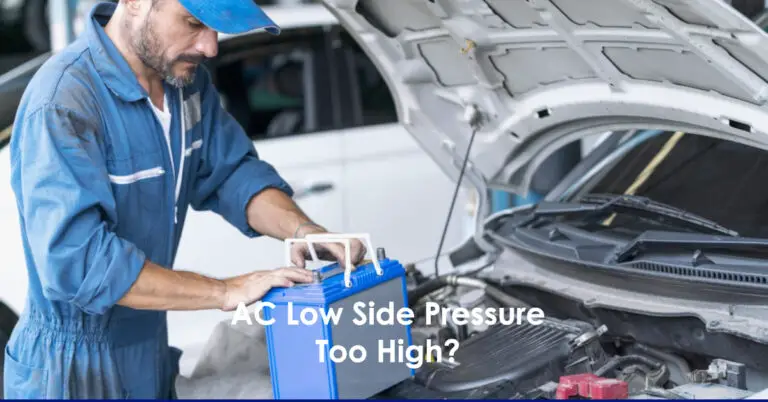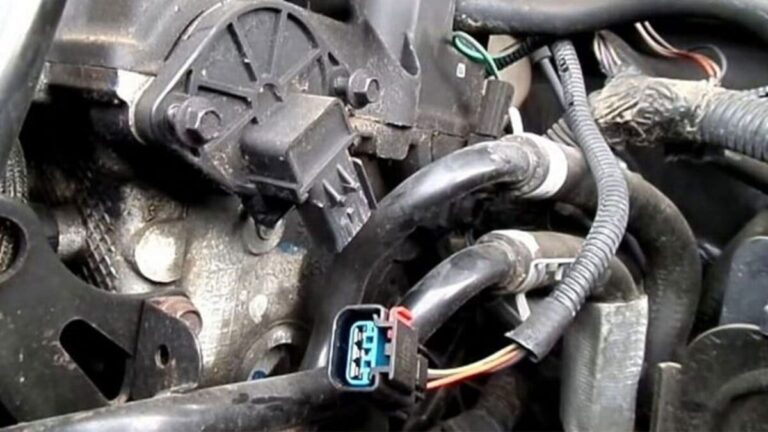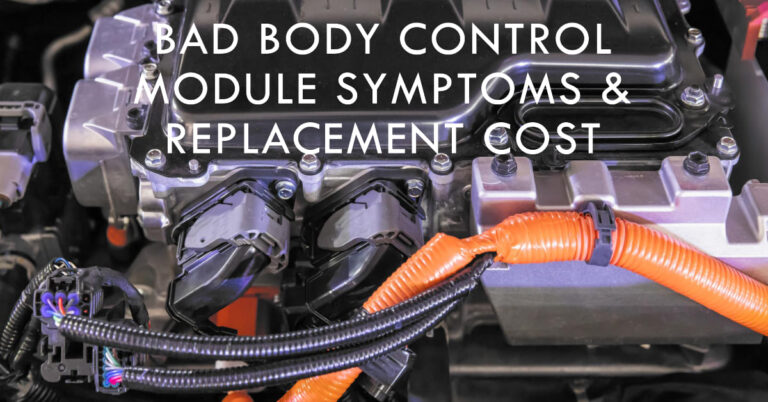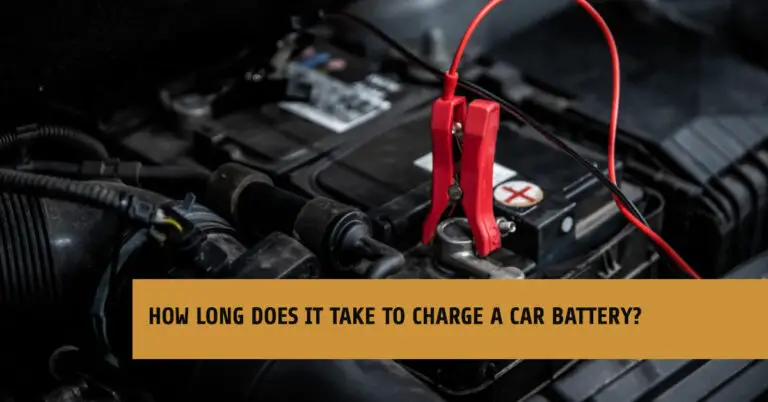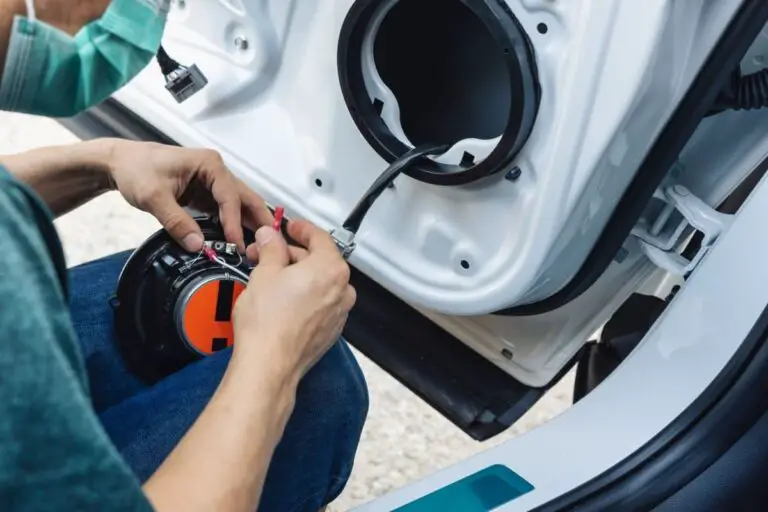How to Fix a Car That Struggles to Start When the Battery is Fine?

Car owners often experience the frustration of turning the key in the ignition only to hear the engine struggle to start. While a weak battery is often the culprit, sometimes the battery is fine and the car still struggles to start. This can leave drivers scratching their heads, wondering what could be causing the problem.
Fortunately, there are several potential causes for a car struggling to start when the battery is fine. One common issue is a fuel delivery problem, such as a clogged fuel filter or a failing fuel pump. Another possibility is a problem with the ignition system, such as worn spark plugs or a faulty ignition coil. In this article, we will explore these and other potential causes of a car struggling to start when the battery is fine, as well as provide tips on how to fix the issue.
Table of Contents
The Battery
When a car struggles to start, one of the first things to check is the battery. Even if the battery seems fine, it is still worth checking as it could be the root cause of the issue. Here are some steps to take when checking the battery.
Checking the Battery
To check the battery, start by turning off all electrical components in the car, including the radio, lights, and air conditioning. Then, use a voltmeter to check the battery’s voltage. A fully charged battery should have a voltage of 12.6 volts or higher. If the voltage is lower than this, the battery may need to be charged or replaced.
Cleaning the Battery Terminals
If the battery voltage is fine, the next step is to check the battery terminals. Over time, the terminals can become corroded, which can prevent the battery from delivering enough power to start the car. To clean the terminals, start by removing the negative cable from the battery. Then, use a wire brush or battery terminal cleaner to remove any corrosion from the terminals. Once the terminals are clean, reattach the cables and try starting the car again.
Replacing the Battery Cables
If the battery terminals are clean and the battery voltage is fine, the issue could be with the battery cables. Over time, the cables can become damaged or corroded, which can prevent the battery from delivering enough power to start the car. To replace the cables, start by disconnecting the negative cable from the battery. Then, follow the cable to where it connects to the engine or starter and disconnect it. Repeat this process for the positive cable. Finally, install the new cables and reconnect them to the battery.
The Starter
When a car struggles to start but the battery is fine, the starter motor is often the culprit. The starter motor is responsible for turning the engine over when you turn the key in the ignition. If it is not functioning properly, it can cause slow or no starts.
Checking the Starter Motor
To check the starter motor, the first step is to make sure the battery is fully charged. Once this is confirmed, the starter motor can be tested using a multimeter. A multimeter can measure the voltage and amperage of the starter motor to determine if it is functioning properly.
Inspecting the Starter Solenoid
The starter solenoid is another component of the starter system that can cause starting issues. The solenoid is responsible for engaging the starter motor with the flywheel when you turn the key. If it is not functioning properly, it can cause a clicking sound or no sound at all when you turn the key.
To inspect the starter solenoid, first, locate it near the starter motor. Then, check the wiring connections to make sure they are secure and not corroded. If the wiring connections are fine, the solenoid can be tested using a multimeter.
Replacing the Starter Motor
If the starter motor or solenoid is found to be faulty, it will need to be replaced. It is important to choose a high-quality replacement part to ensure proper function and longevity.
Replacing the starter motor involves removing the old one and installing the new one in its place. It is important to follow the manufacturer’s instructions and torque specifications to ensure proper installation.
The Ignition Switch
When a car struggles to start but the battery is fine, one possible culprit is a faulty ignition switch. The ignition switch is responsible for transferring energy from the battery to the primary electrical parts of the vehicle, including the starter and ignition system.
Inspecting the Ignition Switch
To determine if the ignition switch is the cause of the starting issues, a visual inspection can be performed. The ignition switch is typically located on the steering column or dashboard and can be identified by a keyhole or push-button start. Check for any signs of damage, such as cracks, corrosion, or loose connections. If any issues are found, the ignition switch may need to be replaced.
Replacing the Ignition Switch
Replacing the ignition switch should be done by a professional mechanic, as it involves working with the electrical system of the vehicle. The cost of replacing the ignition switch can vary depending on the make and model of the car. The cost of the part itself can range from $50 to $250, while the labor cost can range from $100 to $200.
Before replacing the ignition switch, it is important to rule out other possible causes of starting issues, such as a dead battery, clogged fuel filter, or faulty fuel pump. Once it has been determined that the ignition switch is the cause of the starting issues, the replacement process can begin.
The Fuel System
When a car struggles to start, but the battery seems fine, it could be an issue with the fuel system. The fuel system is responsible for delivering fuel to the engine, and if it’s not working properly, the engine won’t start. Here are some sub-sections to help diagnose and fix fuel system problems.
Checking the Fuel Pump
The fuel pump is responsible for delivering fuel to the engine. If the fuel pump is not working properly, the engine won’t start. To check the fuel pump, you can listen for a humming noise when you turn the key in the ignition. If you don’t hear the humming noise, it could be a sign that the fuel pump is not working. You can also check the fuel pressure using a fuel pressure gauge. If the fuel pressure is low, it could be a sign that the fuel pump is failing.
Inspecting the Fuel Filter
The fuel filter is responsible for filtering out any impurities from the fuel before it reaches the engine. Over time, the fuel filter can become clogged with dirt and debris, which can prevent fuel from reaching the engine. To inspect the fuel filter, you can remove it from the fuel line and inspect it for any signs of damage or clogging. If the fuel filter is clogged, it will need to be replaced.
Cleaning the Fuel Injectors
The fuel injectors are responsible for delivering fuel to the engine in a fine mist. Over time, the fuel injectors can become clogged with dirt and debris, which can prevent fuel from reaching the engine. To clean the fuel injectors, you can use a fuel injector cleaner. This is a special type of cleaner that is added to the fuel tank. The cleaner will help remove any dirt and debris from the fuel injectors, allowing fuel to flow freely to the engine.
Conclusion
In conclusion, there are a few things to keep in mind when dealing with a car that struggles to start despite the battery being fine. First, it is important to check the fuel pump and fuel filter to ensure they are functioning correctly. If these components are clogged or failing, they can prevent fuel from reaching the engine, causing slow or difficult starts.
Secondly, it is crucial to check the ignition system, including the spark plugs and ignition coils. If these components are worn or damaged, they can prevent the engine from starting or cause it to start slowly.
Additionally, it is essential to check the engine oil level and quality. Low oil levels or dirty oil can cause engine damage and prevent the engine from starting.
Finally, if none of these issues are present, it may be necessary to have the car’s computer system checked for any error codes or malfunctions. A professional mechanic can diagnose and fix any issues with the computer system, ensuring that the car starts smoothly and reliably.
Overall, by following these steps and keeping up with regular maintenance, car owners can avoid the frustration and inconvenience of a car that struggles to start despite having a good battery.
FAQs
Can a dirty air filter cause a car to struggle to start?
Yes, a dirty air filter can restrict airflow to the engine, leading to a weak spark and poor fuel economy. This can cause the engine to struggle to start, especially in cold weather. It is recommended to replace the air filter every 12,000 to 15,000 miles or as recommended by the manufacturer.
Can a faulty ignition switch cause a car to struggle to start?
Yes, a faulty ignition switch can cause a car to struggle to start. The ignition switch is responsible for sending power to the starter motor, which turns the engine over. If the switch is faulty, it can prevent the starter motor from receiving power, causing the engine to struggle to start. A qualified mechanic should be consulted to replace the ignition switch.
Can a bad fuel pump cause a car to struggle to start?
Yes, a bad fuel pump can cause a car to struggle to start. The fuel pump is responsible for supplying fuel to the engine. If the pump is failing, it may not be able to supply enough fuel to the engine, causing it to struggle to start. A mechanic should be consulted to replace the fuel pump.
Can a clogged fuel filter cause a car to struggle to start?
Yes, a clogged fuel filter can cause a car to struggle to start. The fuel filter is responsible for removing impurities from the fuel before it reaches the engine. If the filter is clogged, it can restrict fuel flow to the engine, causing it to struggle to start. It is recommended to replace the fuel filter every 20,000 to 30,000 miles or as recommended by the manufacturer.
Can a weak starter motor cause a car to struggle to start?
Yes, a weak starter motor can cause a car to struggle to start. The starter motor is responsible for turning the engine over. If the motor is weak, it may not be able to turn the engine over fast enough, causing it to struggle to start. A mechanic should be consulted to replace the starter motor.

